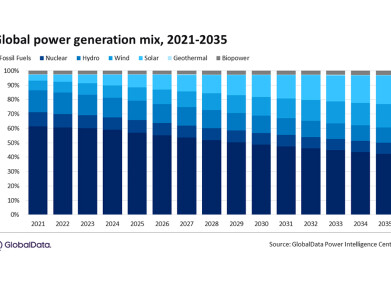Green Energy
How is Uruguay Defining Global Trends in Energy Investment?
Jan 06 2016
In 2014, the World Wildlife Federation (WWF) hailed the diminutive South American country of Uruguay as “defining global trends in renewable energy investment”. Since then, it has earned plaudits from the Economic Commission for Latin America and the Caribbean and the World Bank, and was held up as a shining example to other nations during the recent COP21 climate change talks in Paris. Why?
Well, in the past seven years, Uruguay has revolutionised its energy generation methods, drastically cutting its carbon emissions without the help of governmental subsidies or rising costs for the man on the street. Furthermore, it has concentrated on developing various different forms of renewable technology, allowing it to boast 94.5% of its energy generation from renewables without relying overly on any one single source.
A Dramatic Turnaround
At the turn of the millennium, Uruguay’s environmental situation looked very different. In 2000, it was relying on oil for much of its energy needs, with the substance accounting for 27% of its total imports. Borrowing electricity from Argentina to alleviate frequent power outages was commonplace, and a new pipeline to bring in gas from its larger neighbour was being put in place.
Fast forward 15 years and Uruguay is now one of the greenest cities in the world. Over the past five years, investment in energy (in large part on renewables) has peaked at $7 billion USD, which is three times the amount recommended by certain climate change experts. This has allowed for rapid expansion of its wind turbine fields, as well as increased investment in solar and biomass industries.
Add these to the already extensive hydropower network in place and that goes some way to explaining why Uruguay now receives the vast majority of its energy from renewables. Taking into account the fuel used in transportation for the country’s total energy needs, the renewable contribution falls to 55% - but that’s still significantly higher than the worldwide average of just 12%. Tellingly, Uruguay exported one third of its power generation to Argentina last year, rather than relying on imports from that country as in the past.
Setting an Example
Remarkably, Uruguay has achieved this feat without any contribution from nuclear power whatsoever, nor the investment in “new technologies” which many other politicians and experts have touted as the real solution to climate change.
The diversity of the energy mix also means that Uruguay is relatively immune to environmental changes. Whereas other countries of a similar size (Iceland, Lesotho, Paraguay) have achieved similar successes with their renewables, they mostly rely on a single sector. Not so with Uruguay.
Research into the value of waste materials as fuel in the shape of biomass has been important in supplementing the hydropower stations which were already in place, and the influx of wind turbines and solar panels into the countries offer different routes of energy generation. Armed with these technologies, Uruguay approached the COP21 climate talks with an incredibly ambitious aim to cut emissions by 88% by 2017 from the averages of the year 2009-13.
Encouragingly, the nation’s chief of climate change policy Ramón Méndez believes other countries can easily follow suit. “What we’ve learned is that renewables is just a financial business,” he explained. “The construction and maintenance costs are low, so as long as you give investors a secure environment, it is very attractive.”
Hopefully, Uruguay’s success will make the renewables industry seem more attractive to other nations, as well.
Events
Nov 26 2024 Paris, France
Nov 27 2024 Istanbul, Turkey
H2O Accadueo International Water Exhibition
Nov 27 2024 Bari, Italy
Biogas Convention & Trade Fair 2024
Nov 27 2024 Hanover, Germany
Dec 11 2024 Shanghai, China





-as-feedstock.jpg)








